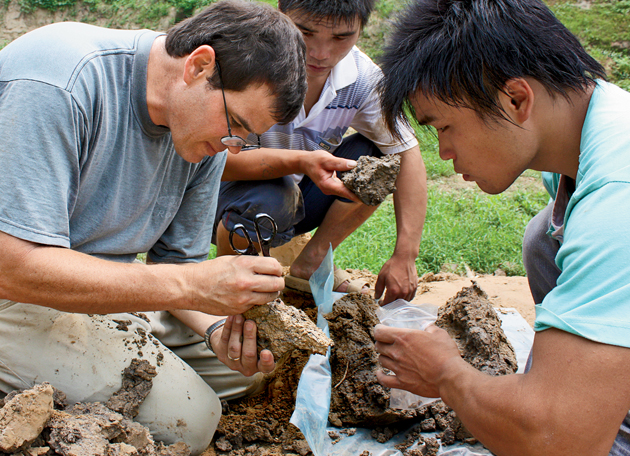New research from Washington University in St. Louis and Sichuan University in China explores how and why ancient communities built social relationships and cultural identities across the extreme terrain in Tibet.
Tag: Bronze Age
The Grave’s Embrace: New research sheds light on Bronze Age family relationships
Poignant prehistoric burials containing the remains of an adult and child laid in the grave as though embracing in death have long fascinated archaeologists.
Residents of the Bronze Age settlement Kent in Kazakhstan were one of the first to develop metal production in Eurasian steppes
Scientists analyzed artefacts of Late Bronze Age, found in Ural-Kazakhstan region. Alloys of iron in most findings were natural ones. The only place in the region where miners had mined iron ore in II millennium BC is settlement Kent in the Central Kazakhstan.
Ancient miners made metalworking at the copper mine Vorovskaya Yama
Russian scientists studied artefacts from cultural layer of the Vorovskaya Yama mine, situated in the Chelyabinsk region, and found out that there, apart from ore production, people made metalworking. About 1500 years BCE masters melted out products from copper and tin bronze.
Using paleogenomics to elucidate 10,000 years of immune system evolution
Scientists from the Institut Pasteur, Université Paris Cité, the CNRS and the Collège de France have used paleogenomics to trace 10,000 years of human immune system evolution.
Research finally answers what Bronze Age daggers were used for
Analysis of Bronze Age daggers has shown that they were used for processing animal carcasses and not as non-functional symbols of identity and status, as previously thought.
Before Stonehenge monuments, hunter-gatherers made use of open habitats
Study investigates habitat conditions encountered by first farmers and monument-builders.
’Til the cows come home
Meat and dairy played a more significant role in human diets in Bronze Age China than previously thought. A new analysis also suggests that farmers and herders tended to sheep and goats differently than they did their cows, unlike in other parts of the world — keeping cows closer to home and feeding them the byproducts of grains that they were growing for their own consumption, like the grass stalks from millet plants.

Under climate stress, human innovation set stage for population surge
Instead of a collapse amid dry conditions, development of agriculture and increasingly complex human social structures set the stage for a dramatic increase in human population in central plains of China around 3,900 to 3,500 years ago.

Late Neolithic Italy was home to complex networks of metal exchange
Analysis reveals where prehistoric Italian communities got their copper, from Tuscany and beyond